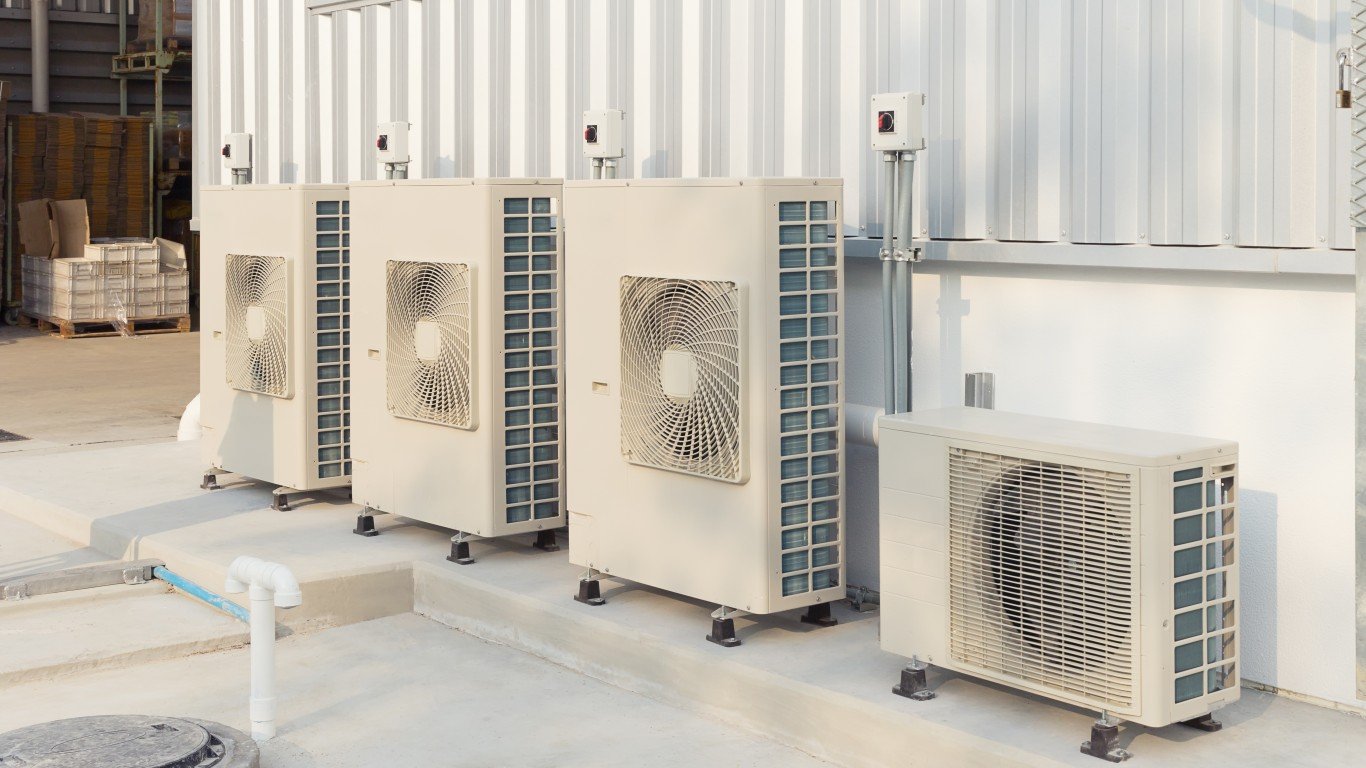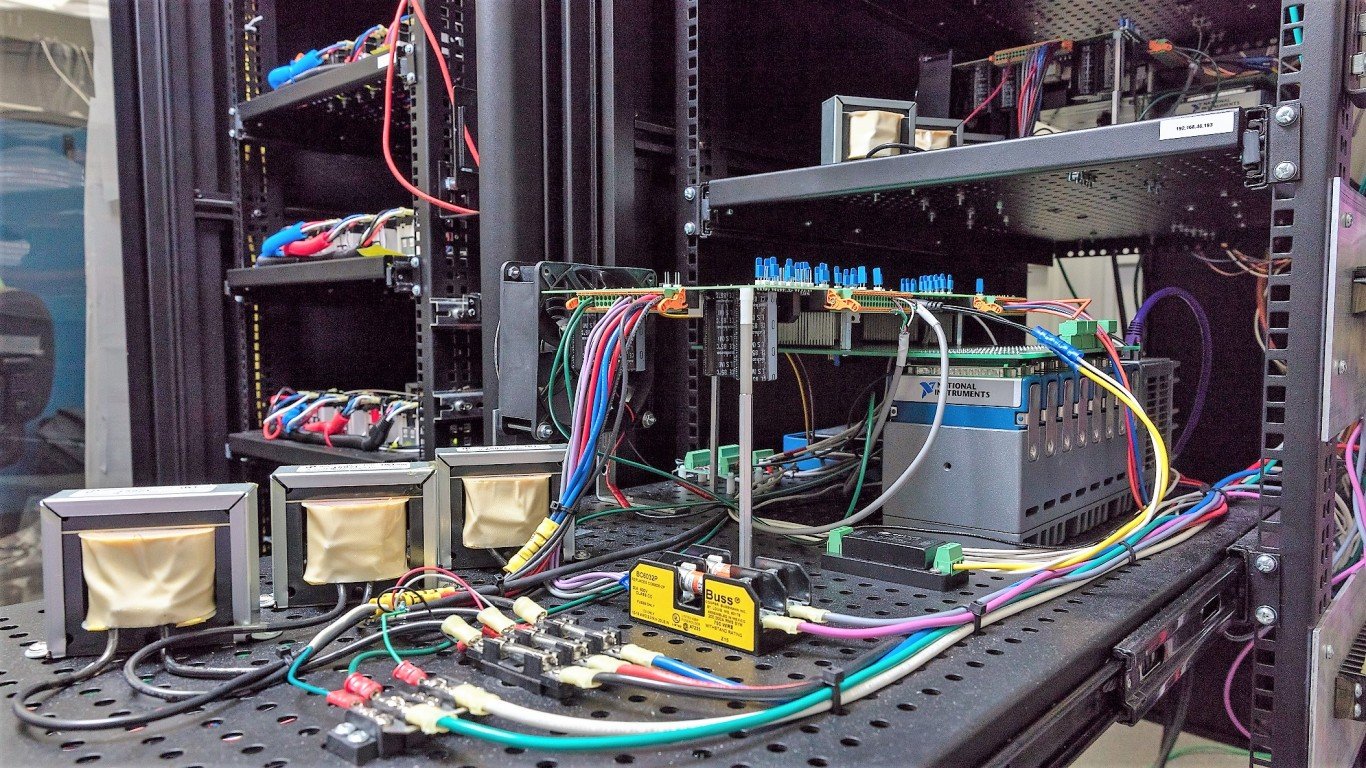
16. High efficiency HVAC & renewable H&C
> Clean energy jobs growth 2017-2020: -7.18%
> Clean energy jobs growth 2017-2019: 5.36% — 9th lowest
> Employment 2017: 537,475 — 2nd highest
> Employment 2019: 566,290 — 2nd highest
> Employment 2020: 498,863 — 2nd highest
Between 2017 and 2020, jobs in high efficiency HVAC and renewable heating and cooling had already risen close to the job numbers for traditional HVAC, ranging from a difference of 21,000 jobs in 2017 to 33,000 in 2020. As renewable energy sources become more available, so will employment involving heating and cooling systems that use less energy and refrigerants, are less polluting, and keep indoor air cleaner.
15. Smart grid
> Clean energy jobs growth 2017-2020: -6.09%
> Clean energy jobs growth 2017-2019: 4.25% — 6th lowest
> Employment 2017: 24,586 — 9th lowest
> Employment 2019: 25,631 — 9th lowest
> Employment 2020: 23,089 — 9th lowest
Our electricity transmission and delivery system — known as “the grid” — was developed in the 1890s for the needs of a very different era from our own. The grid is now plagued by aging infrastructure, outdated technology, inefficient delivery, and vulnerability to weather events such as heat and cold waves and storms.
The smart grid is being developed to address those weaknesses, introducing two-way communication in the flow of electricity, coupled with sophisticated computerization and sensing technology. Building and maintaining the smart grid will create a demand for specialized training and workers.

14. Other biofuels
> Clean energy jobs growth 2017-2020: -5.96%
> Clean energy jobs growth 2017-2019: 1.68% — 3rd lowest
> Employment 2017: 18,695 — 6th lowest
> Employment 2019: 19,009 — 5th lowest
> Employment 2020: 17,581 — 5th lowest
Ethanol is the most well known and commonly used biofuel produced from biomass, essentially plant material, as distinguished from fossil fuels that are extracted from geological formations. But there are other biofuels that share the same positive characteristic: they are clean burning, are derived from renewable resources, and can be produced anywhere that the requisite plant material can be grown.
Like ethanol, these fuels — biogas, biodiesel, methanol, and butanol — will play a role as transitional fuels as we continue to generate greater percentages of power from renewable sources that do not require combustion.

13. Traditional HVAC
> Clean energy jobs growth 2017-2020: -4.82%
> Clean energy jobs growth 2017-2019: 7.13% — 10th highest
> Employment 2017: 558,576 — the highest
> Employment 2019: 598,375 — the highest
> Employment 2020: 531,640 — the highest
Heating and cooling systems represent a substantial investment for residential and commercial buildings alike. Even when incentives are available, replacement is costly. The movement to high efficiency and renewable energy systems will take time as older systems fail and pricing for newer systems becomes more affordable. Still, traditional, affordable HVAC has become significantly more efficient over the years, capable of reducing both cost and energy demands when older systems are replaced.

12. Energy Star & efficient lighting
> Clean energy jobs growth 2017-2020: -4.14%
> Clean energy jobs growth 2017-2019: 7.91% — 9th highest
> Employment 2017: 511,933 — 3rd highest
> Employment 2019: 552,435 — 3rd highest
> Employment 2020: 490,717 — 3rd highest
Energy Star is a U.S. Department of Energy certification program that rates appliances and lighting for energy efficiency. Certification is used to incentivize the use of efficient products in industry and new construction, while, for residential consumers, products are promoted with promises of cost savings.
Because it does not represent a single breakthrough technology, the Energy Star impact on energy efficiency and pollution reduction is incremental, but it will reliably continue to create jobs and make a difference in the larger quest for cleaner energy. Since 1992, it is already responsible for reducing greenhouse emissions by 4 billion metric tons, according to Energy Star.


 24/7 Tempo
24/7 Tempo




